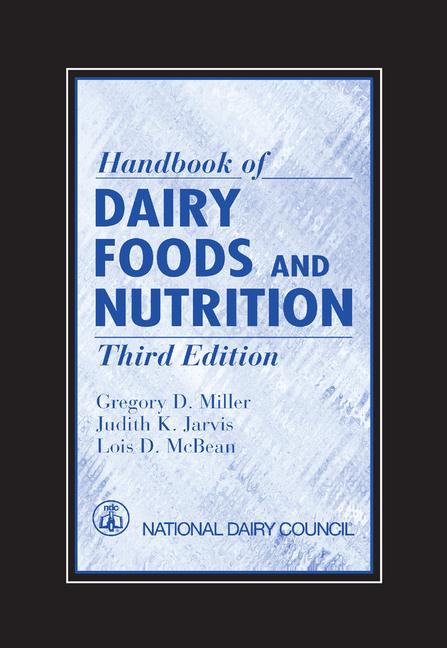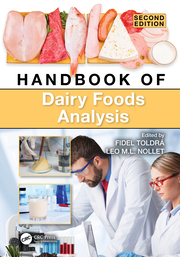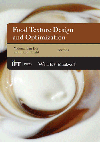Dining on Dairy
Being in the media, I consume a lot of media: newspapers, magazines, television, radio, websites and billboards. And being editor of this magazine, I’m particularly interested in the portrayal of food, especially dairy foods, in these media.
Being in the media, I consume a lot of media: newspapers, magazines, television, radio, websites and billboards. And being editor of this magazine, I’m particularly interested in the portrayal of food, especially dairy foods, in these media.
This country really has a lot of hang-ups about what, how and when we eat. There is sensible advice to cut down on portions, reduce salt and sugar consumption, and don’t be distracted by food while driving. But some of television’s finest talking heads can beat news stories like a soufflé, whipping the public into a fear frenzy about food.
Jaime Oliver made a splashy demonstration on his Food Revolution television show about the quantity of sugar added to chocolate milk that’s served to children in Los Angeles schools. He filled a school bus with sugar (sand, actually) and when it was full, he said even that quantity did not represent all the sugar. His point was that schools should not serve flavored milk to children because of the added sugar.
I disagree with his position. (You can read my reasons in the October 2010 Dairy Foods, “Cafeteria Food Fight.”) I am waiting for another equally graphic demonstration in which Oliver fills a school bus with protein, calcium, vitamin D, riboflavin, phosphorus and other nutrients to demonstrate milk’s inherent healthfulness.
Last month, The New York Times examined food marketers (including dairy processors) and their promotional claims related to the addition of functional ingredients. In “Foods With Benefits, or So They Say,” the Times asks, “Are all these products really healthy, or are some of them just hyped?” The newspaper acknowledges that “such claims are perfectly legal, provided that they are backed up by some credible science.”
The food industry sees value in making these claims, and in the United States, they make claims until they are told by regulatory agencies to stop. Last December, the Federal Trade Commission told Dannon to stop saying that its yogurt, dairy drinks and probiotic foods or drinks reduce the likelihood of getting a cold or the flu unless the Food and Drug Administration approves the claim. Dannon also agreed to stop saying its products can relieve temporary irregularity. It paid $21 million to resolve investigations by the state’s attorney general.
Things are a little different in Europe where the European Food Safety Authority must sign off on applications submitted by food companies. Currently, an independent panel of experts has 2,700 claims to review, according to the Times.
I was in flight on my way to visit a manufacturer of functional ingredients when I read “Snacks For A Fat Planet” about PepsiCo’s efforts to make healthier foods. Despite that provocative headline in the May 16th The New Yorker, it’s a fair look at the food giant’s strategies. CEO Indra Nooyi “wants to increase what she calls its ‘good for you’ products - snacks and drinks made of grains, fruit, nuts, vegetables and dairy” from $10 billion to $30 billion by 2020, according to the article. PepsiCo is out to “drinkify” snacks and “snackify” drinks. Tropolis, which is in test markets in the Midwest, is a fruit juice in squeezable form. PepsiCo will be selling a drinkable oatmeal beverage in Mexico and Brazil later this year. The beverage contains fruit juice, sugar and 8 grams of protein from skim milk.
The June Cooking Light arrived in the mail, touting “25 Healthy Dishes for a Perfect Summer.” I was ready for plates of celery sticks, lemon juice-drenched salad greens and skinless chicken breasts. I was more than delighted to find dairy foods used as ingredients in 14 of the 25 recipes, including the first one - the chilled avocado soup with seared chipotle shrimp calls for ¾ cup of reduced-fat sour cream. Greek yogurt and buttermilk show up in salad dressings, and Greek yogurt appears again in a curried potato salad. Blue cheese is an ingredient in a mayonnaise spread on hamburgers; feta is found in salads. There’s a pizza with shredded fontina cheese, and yogurt in a curried chicken wrap. Even my good friend high-fat butter gets some love. For dessert, there’s 1% milk in a chocolate pudding pie and butter and reduced-fat ice cream in margarita ice cream sandwiches.
Here at last was an adult conversation about eating. I think it is significant that a magazine that is all about promoting low-fat, low-calorie and low-sodium meals found a role for milk, cheese, ice cream, butter and cultured dairy foods. The magazine gives these foods a seat at the dining table without a scary warning or lecture about the dangers of consuming butter or ice cream.
Elsewhere in that issue, Cooking Light offers a shrimp chowder with ⅓ cup heavy whipping cream, mashed potatoes with milk and sour cream, blackened catfish sandwiches with Greek yogurt, flank steak with Gorgonzola cheese and butter, shrimp korma with yogurt, and soufflés calling for butter, fat-free milk or buttermilk. Every recipe lists values for calories, fat, protein and other elements. There are no surprises.
I don’t consider government dietary guidelines and research into food to be a nanny state intrusion. We need information to make informed choices. Americans have plenty of healthy options that embrace dairy foods. If we cook from scratch (allowing for some packaged foods) at home more often, reduce dining out, ditch some snacks and just walk every day, we’d be a whole lot healthier and a lot less scared about food. Rather than being whipped soufflé-like into a food-fear frenzy, we should sit down and enjoy a cheese soufflé with a side of milk and buttered toast. And ice cream for dessert. n
Jim Carper is chief editor of Dairy Foods. Phone: 847-405-4009. Email: carperj@dairyfoods.com
Being in the media, I consume a lot of media: newspapers, magazines, television, radio, websites and billboards. And being editor of this magazine, I’m particularly interested in the portrayal of food, especially dairy foods, in these media.
This country really has a lot of hang-ups about what, how and when we eat. There is sensible advice to cut down on portions, reduce salt and sugar consumption, and don’t be distracted by food while driving. But some of television’s finest talking heads can beat news stories like a soufflé, whipping the public into a fear frenzy about food.
Jaime Oliver made a splashy demonstration on his Food Revolution television show about the quantity of sugar added to chocolate milk that’s served to children in Los Angeles schools. He filled a school bus with sugar (sand, actually) and when it was full, he said even that quantity did not represent all the sugar. His point was that schools should not serve flavored milk to children because of the added sugar.
I disagree with his position. (You can read my reasons in the October 2010 Dairy Foods, “Cafeteria Food Fight.”) I am waiting for another equally graphic demonstration in which Oliver fills a school bus with protein, calcium, vitamin D, riboflavin, phosphorus and other nutrients to demonstrate milk’s inherent healthfulness.
Last month, The New York Times examined food marketers (including dairy processors) and their promotional claims related to the addition of functional ingredients. In “Foods With Benefits, or So They Say,” the Times asks, “Are all these products really healthy, or are some of them just hyped?” The newspaper acknowledges that “such claims are perfectly legal, provided that they are backed up by some credible science.”
The food industry sees value in making these claims, and in the United States, they make claims until they are told by regulatory agencies to stop. Last December, the Federal Trade Commission told Dannon to stop saying that its yogurt, dairy drinks and probiotic foods or drinks reduce the likelihood of getting a cold or the flu unless the Food and Drug Administration approves the claim. Dannon also agreed to stop saying its products can relieve temporary irregularity. It paid $21 million to resolve investigations by the state’s attorney general.
Things are a little different in Europe where the European Food Safety Authority must sign off on applications submitted by food companies. Currently, an independent panel of experts has 2,700 claims to review, according to the Times.
I was in flight on my way to visit a manufacturer of functional ingredients when I read “Snacks For A Fat Planet” about PepsiCo’s efforts to make healthier foods. Despite that provocative headline in the May 16th The New Yorker, it’s a fair look at the food giant’s strategies. CEO Indra Nooyi “wants to increase what she calls its ‘good for you’ products - snacks and drinks made of grains, fruit, nuts, vegetables and dairy” from $10 billion to $30 billion by 2020, according to the article. PepsiCo is out to “drinkify” snacks and “snackify” drinks. Tropolis, which is in test markets in the Midwest, is a fruit juice in squeezable form. PepsiCo will be selling a drinkable oatmeal beverage in Mexico and Brazil later this year. The beverage contains fruit juice, sugar and 8 grams of protein from skim milk.
The June Cooking Light arrived in the mail, touting “25 Healthy Dishes for a Perfect Summer.” I was ready for plates of celery sticks, lemon juice-drenched salad greens and skinless chicken breasts. I was more than delighted to find dairy foods used as ingredients in 14 of the 25 recipes, including the first one - the chilled avocado soup with seared chipotle shrimp calls for ¾ cup of reduced-fat sour cream. Greek yogurt and buttermilk show up in salad dressings, and Greek yogurt appears again in a curried potato salad. Blue cheese is an ingredient in a mayonnaise spread on hamburgers; feta is found in salads. There’s a pizza with shredded fontina cheese, and yogurt in a curried chicken wrap. Even my good friend high-fat butter gets some love. For dessert, there’s 1% milk in a chocolate pudding pie and butter and reduced-fat ice cream in margarita ice cream sandwiches.
Here at last was an adult conversation about eating. I think it is significant that a magazine that is all about promoting low-fat, low-calorie and low-sodium meals found a role for milk, cheese, ice cream, butter and cultured dairy foods. The magazine gives these foods a seat at the dining table without a scary warning or lecture about the dangers of consuming butter or ice cream.
Elsewhere in that issue, Cooking Light offers a shrimp chowder with ⅓ cup heavy whipping cream, mashed potatoes with milk and sour cream, blackened catfish sandwiches with Greek yogurt, flank steak with Gorgonzola cheese and butter, shrimp korma with yogurt, and soufflés calling for butter, fat-free milk or buttermilk. Every recipe lists values for calories, fat, protein and other elements. There are no surprises.
I don’t consider government dietary guidelines and research into food to be a nanny state intrusion. We need information to make informed choices. Americans have plenty of healthy options that embrace dairy foods. If we cook from scratch (allowing for some packaged foods) at home more often, reduce dining out, ditch some snacks and just walk every day, we’d be a whole lot healthier and a lot less scared about food. Rather than being whipped soufflé-like into a food-fear frenzy, we should sit down and enjoy a cheese soufflé with a side of milk and buttered toast. And ice cream for dessert. n
Jim Carper is chief editor of Dairy Foods. Phone: 847-405-4009. Email: carperj@dairyfoods.com
Looking for a reprint of this article?
From high-res PDFs to custom plaques, order your copy today!







